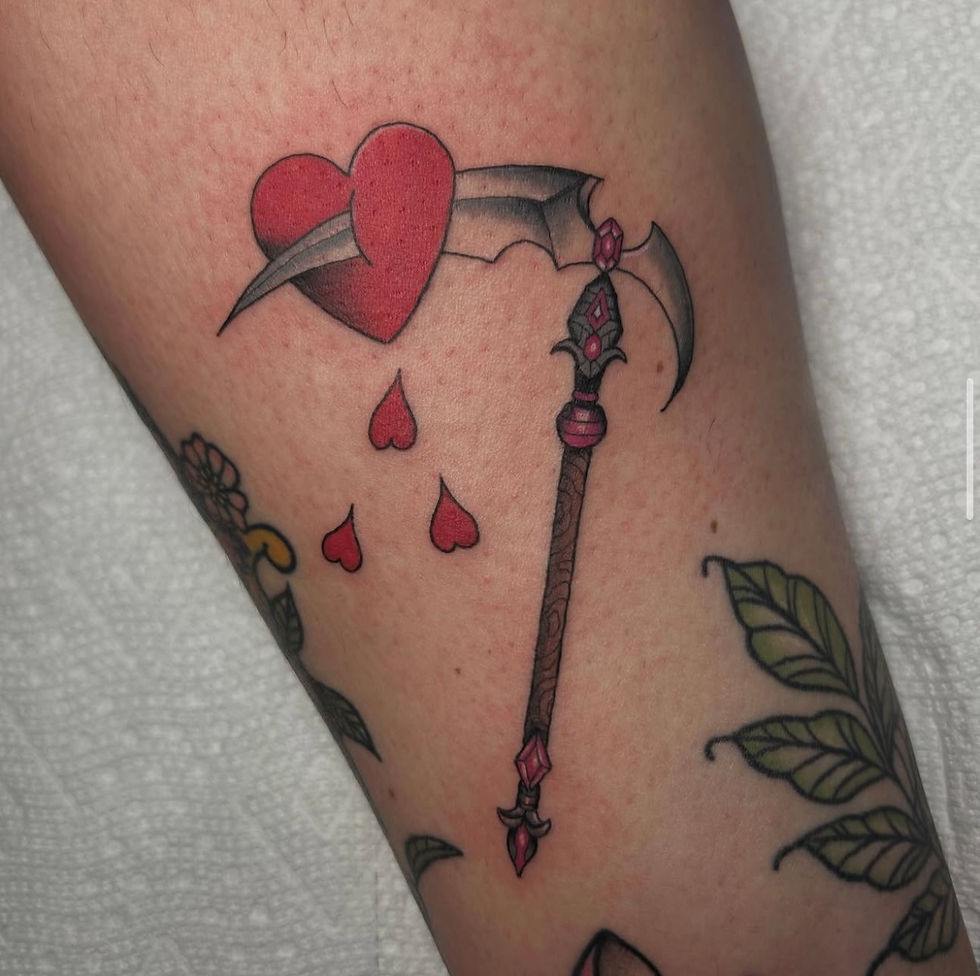Why We Don’t Use Piercing Guns (And You Shouldn’t Either)
- Memphis Mori

- Oct 1
- 2 min read
Piercing guns might seem fast, cheap, and easy — but when it comes to your body, fast and cheap is not the vibe. At GRIM Studios, we use single-use, sterile piercing needles for every piercing, and here’s exactly why piercing guns didn’t make the cut.
1. Piercing Guns Can’t Be Properly Sterilized
Piercing guns are usually made of plastic, which can’t withstand autoclave sterilization (the industry gold standard for killing all bacteria and viruses).
Even if the piercing studs are in sterile packaging, the part of the gun that touches your skin isn’t sterile.
That means there’s a higher risk of infection and cross-contamination — no thanks.
2. They Cause More Trauma to Your Skin
Piercing guns force a blunt stud through your tissue using spring-loaded pressure.
This tears your skin instead of creating a clean opening like a needle does.
More trauma = more swelling, longer healing time, and higher risk of complications.
3. Limited Jewelry Options
Piercing guns only fit certain stud shapes and sizes — usually low-quality, mass-produced jewelry.
That jewelry is often made from materials like nickel that can cause allergic reactions.
With needle piercing, you can choose implant-grade titanium, niobium, or solid gold that’s safe for long-term wear.
4. Higher Risk of Misaligned Piercings
Guns are bulky and can’t be angled precisely, which means crooked piercings are common.
A crooked piercing isn’t just cosmetic — it can lead to uneven healing, discomfort, and rejection.
5. Needles Are Cleaner, Safer, and More Precise
Single-use piercing needles are sterile, sharp, and designed to make a clean channel for your jewelry.
Less trauma means faster healing and fewer complications.
Professional piercers can precisely mark and pierce at the correct angle for your anatomy.
Why People Still Use Piercing Guns
They’re cheaper and faster for businesses to operate
They’re often used in malls or retail stores where staff may have minimal piercing training
Many people simply don’t know the risks

How to Get Pierced Safely
Find a reputable piercing studio — look for one that uses an autoclave and follows strict sterilization protocols.
Ask about jewelry materials — implant-grade titanium, niobium, or solid gold are the safest.
Don’t be afraid to walk away if a piercer tries to use a gun — your body is worth the wait.
💡 Bottom line:Piercing guns might seem harmless, but the truth is they’re less safe, less precise, and more damaging than professional needle piercings. Your piercing deserves the same care and quality you’d want for any other procedure involving your body.









Comments